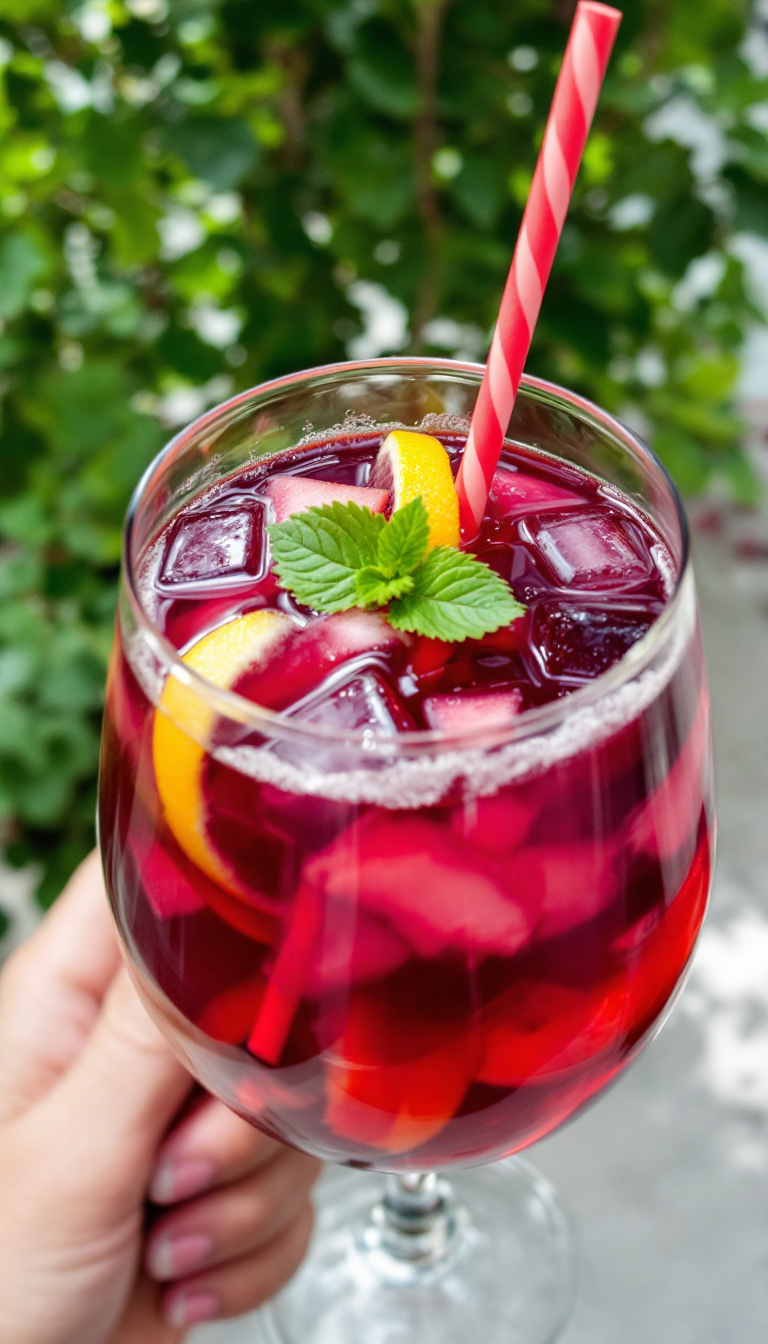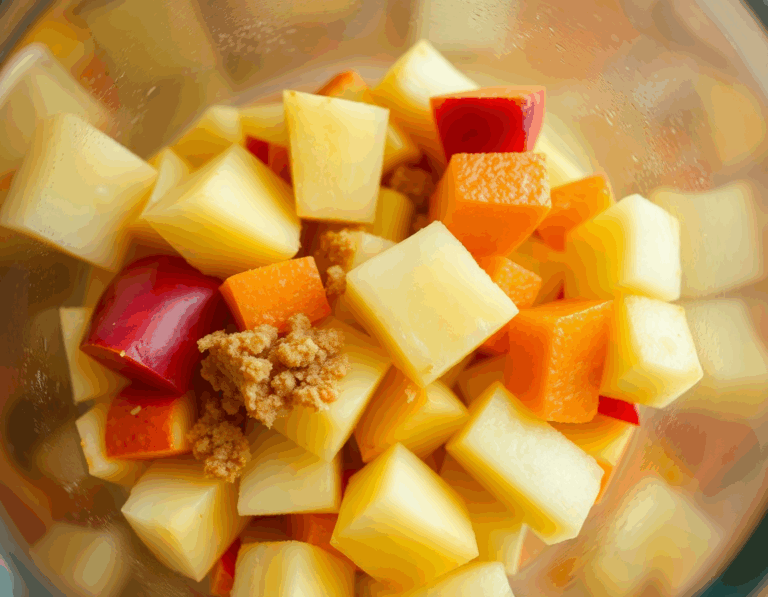Summer’s here, and the sun’s got me dreaming of lazy afternoons and icy drinks. There’s something about a refreshing glass of sangria that screams sunshine and good times, don’t you think? Picture this: a medley of ripe fruits swirling in a sea of chilled wine—it’s like a mini-vacation in a glass!
Steps
- Chop half an apple and half an orange into small pieces, keeping the apple’s skin on and removing large seeds from the orange. Add these to a large pitcher along with brown or cane sugar, and muddle for about 45 seconds.
- Pour in the orange juice and brandy, then muddle the mixture again for another 30 seconds to ensure the flavors combine well.
- Add the dry Spanish red wine to the pitcher and stir thoroughly. Taste the mixture and adjust by adding more brandy, orange juice, or sugar if needed, then stir again to blend.
- Add ice to the pitcher and give it one final stir to chill the sangria. Serve the drink as is or with additional ice, garnishing with extra orange slices if desired.
- Store any leftover sangria in the refrigerator, covered, for up to 48 hours, although it is best enjoyed fresh.
Ingredients
- 1/2 medium apple (cored, skin on, chopped into small pieces)
- 1/2 medium orange (rind on, sliced into small pieces, large seeds removed, plus more for garnish)
- 3-4 tablespoons organic brown sugar (or 3 tablespoons, approximately 37.5 grams, organic cane sugar)
- 3/4 cup orange juice (plus more to taste)
- 1/3 cup brandy (plus more to taste)
- 750 ml bottle dry Spanish red wine
- Approximately 1 cup ice for chilling
Nutritional Values
Calories: 1072 | Carbohydrates: 85.6 g | Protein: 2.8 g | Fat: 0.8 g | Saturated Fat: 0.08 g | Polyunsaturated Fat: 0.12 g | Monounsaturated Fat: 0.08 g | Trans Fat: 0 g | Cholesterol: 0 mg | Sodium: 40 mg | Potassium: 1572 mg | Fiber: 4 g | Sugar: 58 g | Vitamin A: 584 IU | Vitamin C: 132 mg | Calcium: 136 mg | Iron: 4.4 mg
FAQ
- What is the origin of sangria?
- Sangria is believed to have originated over 2,000 years ago during the Roman era on the Iberian Peninsula. It became popular in Europe in the 1800s and gained wider recognition in the United States after being featured at the 1964 World’s Fair in New York. While it is often associated with Spain, there is no official recipe for sangria in Spain, and locals tend to prefer a similar drink called tinto de verano.
- What are the main ingredients in traditional red sangria?
- Traditional red sangria typically includes fruit (such as apples and oranges), orange juice, a sweetener (like brown or cane sugar), a liquor (such as brandy or rum), a bold, fruity, dry Spanish red wine (like Tempranillo or Garnacha), and ice for chilling.
- Can I substitute rum for brandy in the sangria recipe?
- Yes, you can substitute rum for brandy in the sangria recipe if you prefer. The choice of liquor can be adjusted based on personal taste preferences.
- How long can I store leftover sangria, and how should it be stored?
- Leftover sangria can be stored covered in the refrigerator for up to 48 hours, though it is best enjoyed fresh for optimal flavor.
- What are some recommended food pairings with sangria?
- Sangria pairs well with a variety of summer dishes such as patatas bravas, stuffed peppers, veggie burgers, and salads.
Tips
- Choose the Right Wine: Opt for a fruity, full-bodied, dry Spanish red wine like Tempranillo or Garnacha to capture the traditional sangria flavor. A suitable wine enhances the overall taste of your sangria.
- Muddle for Flavor: When adding fruits and sugar to the pitcher, make sure to muddle them well. This process releases the juices and oils, intensifying the fruity flavors in your sangria.
- Adjust to Taste: After mixing all the ingredients, taste your sangria and adjust the flavors as needed. You can add more brandy, orange juice, or sugar to achieve your preferred balance of sweetness and strength.
- Serve Fresh: Sangria is best enjoyed fresh. While leftovers can be stored in the refrigerator for up to 48 hours, the flavors are most vibrant when you serve the drink immediately after preparation.
Equipment
- Large pitcher
- Muddler (or a suitable substitute like a wooden spoon if you don’t have one)

